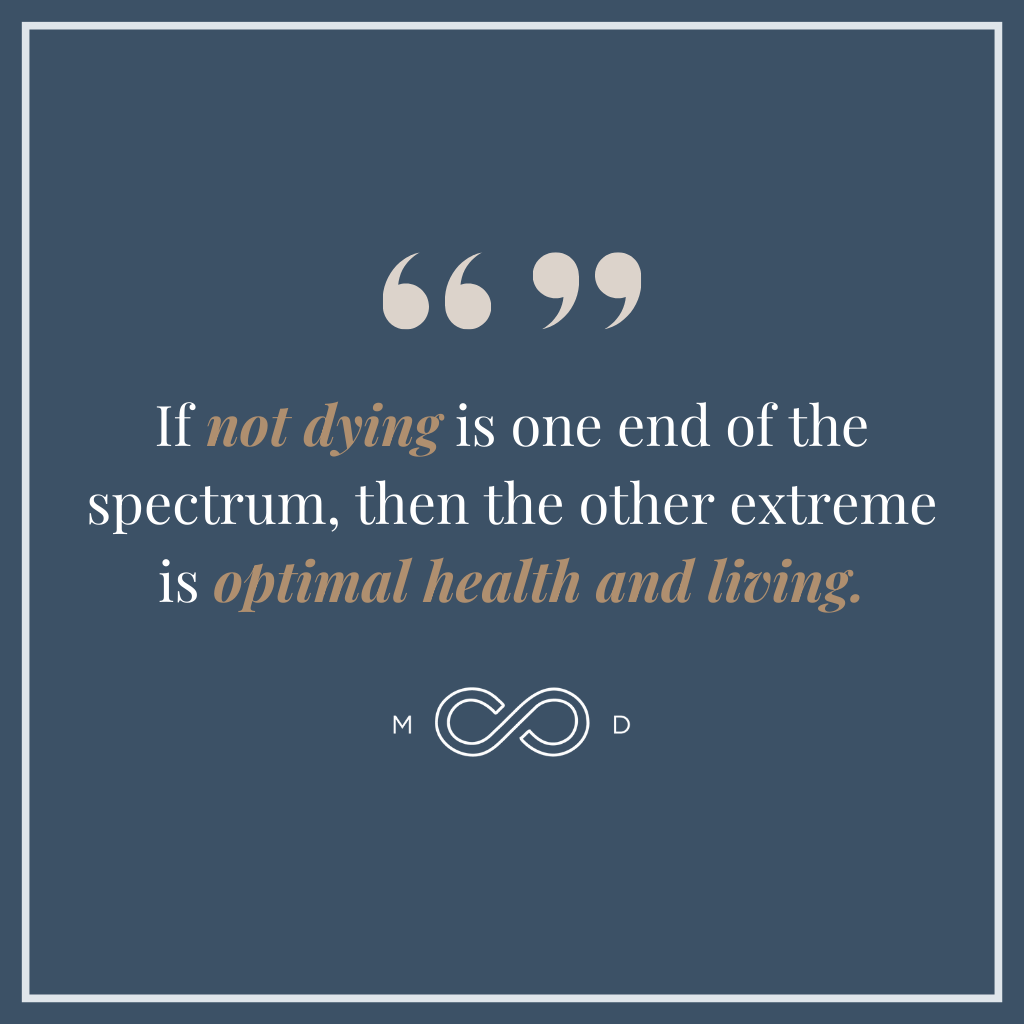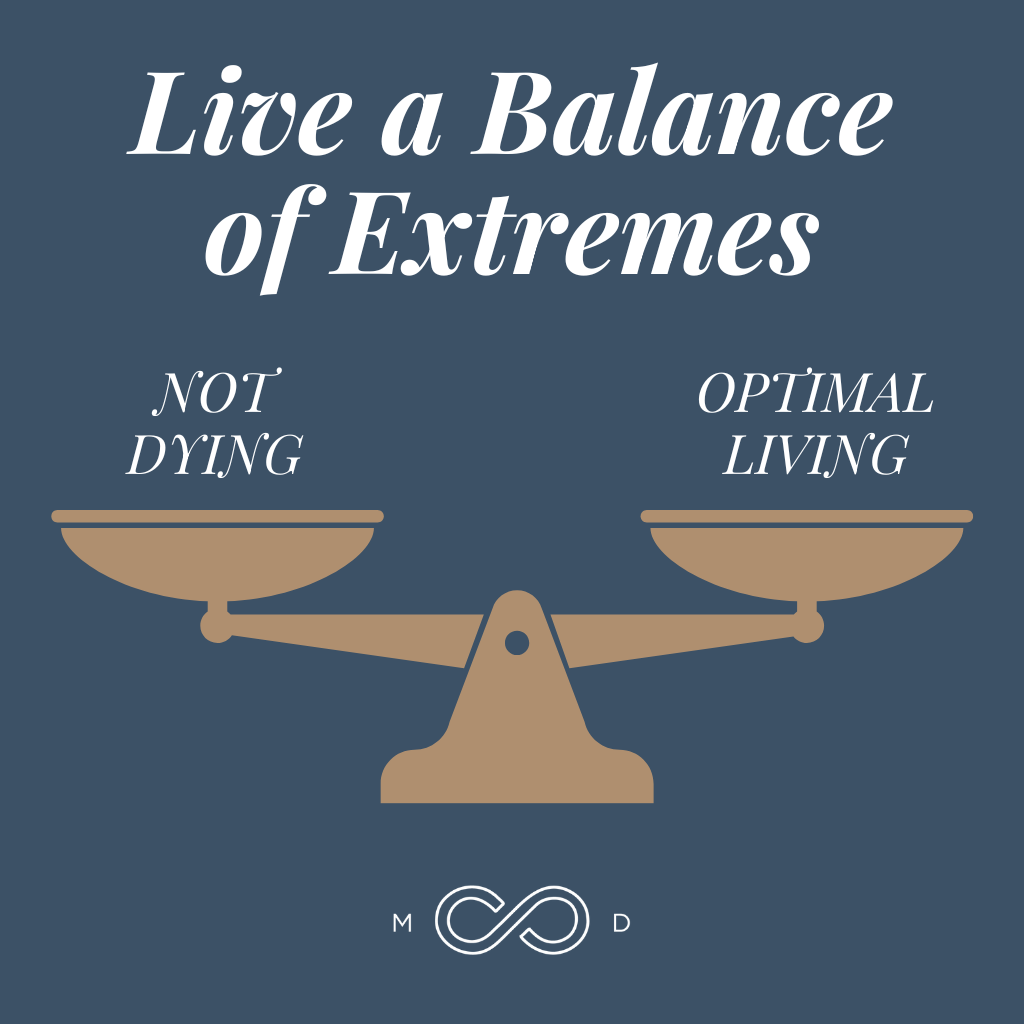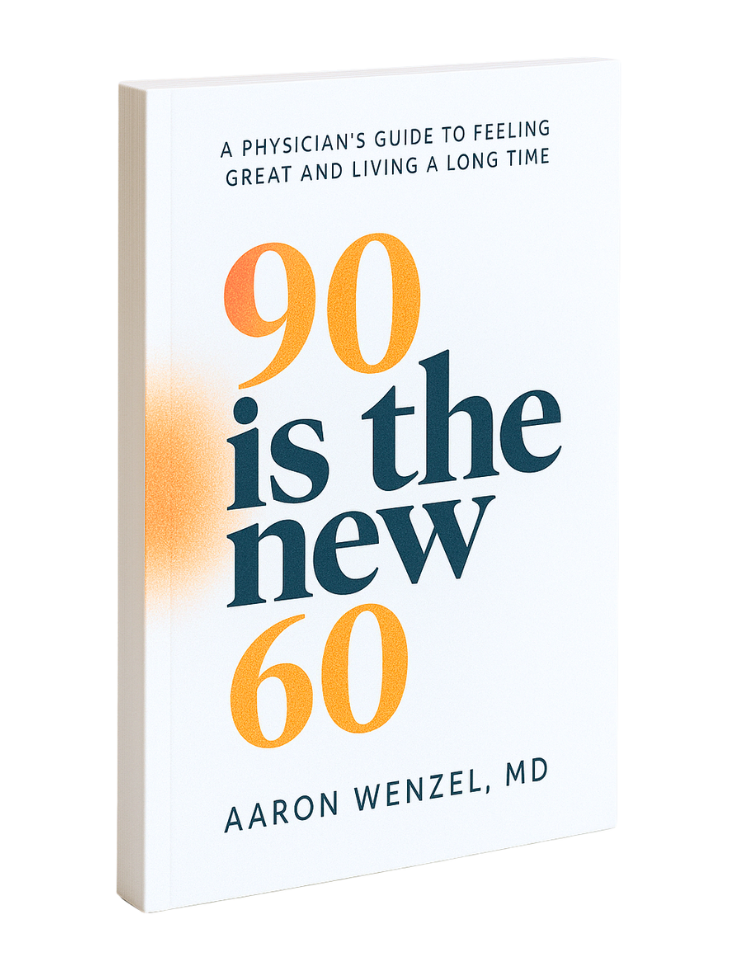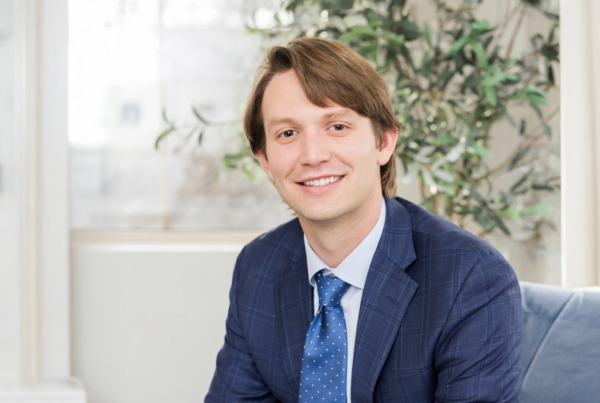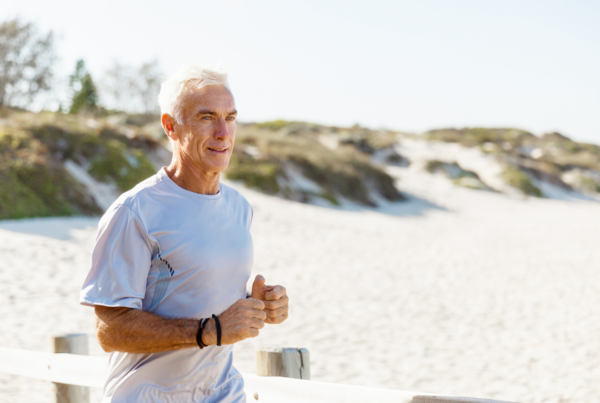When most people think about healthcare, they think instinctively about being healthy. The challenge is that in the current healthcare delivery model, it’s difficult — potentially impossible — for many to achieve true health.
Our existing system is very good at treating and managing disease, but it fails horribly at improving health in terms of avoiding or delaying disease. What we effectively have isn’t truly health care — it’s sick care at scale.
Unfortunately, the current sick care model can make attempts to cultivate true health incredibly frustrating. It simply isn’t set up that way.
While we certainly need to take action to avoid the leading causes of death in the U.S. (heart disease, cancer, dementia, etc.), simply avoiding death isn’t the definition of a fulfilling life.
Why Survival Isn’t Enough
If you want to live a long, healthy life, then surviving is (obviously) essential. So working to manage whatever is statistically most likely to take you off the planet makes sense. But not dying can’t be the only goal.
It’s possible for all our prioritization, effort, energy, time, thinking, and resources to go toward avoiding early death. But now that you haven’t died, what else is there? What did you avoid dying for?
Once you have the risk factors for the leading causes of death in the U.S. under control, you’re free to look at the other extreme — health multipliers. You can take a breath, look around, and consider:
- How can I improve my vitality?
- How can I add decades of vibrant living to my life?
- How can I increase both the quantity and quality of my years?
- How can I enrich my relationships?
- How can I contribute to causes that matter to me?
- How do I pursue my life’s purpose?
If not dying is one end of the spectrum, then the other extreme is optimal health and living.
Once you’ve de-risked your future health as much as possible, you have the freedom to explore the exciting realm of optimal living. But that’s very difficult — almost impossible — to do in a sick care model, where the focus remains firmly on not dying.
DOWNLOAD OUR FREE EBOOK
Concierge Medicine is the future of healthcare.
Learn more about this refreshing alternative to traditional primary care, and decide if it's right for you.
Key Considerations to decide...
Is Concierge Medicine Right for You?
Pursuing a Life of Purpose
Once you remove the immediate risk and fear of death, you’re free to be curious about what you can become. Of all creatures, humans have a unique ability not just to survive but to thrive. As a species, we of course don’t want to die, but we also want to become something more.
The color, dimension, vitality, and richness of life live in this space of looking beyond mere survival, of becoming. It’s where we begin to ask big questions that affect the direction of our thoughts, plans, goals, and energy:
- What am I?
- What can I pursue?
- What problems can I solve?
- What can I be a part of?
- Who can I help?
If we never look beyond the goal of avoiding death, then even de-risking our future health will leave us dissatisfied and unfulfilled. Because optimal living is where true fulfillment lies.
What It Means to Live in the Extremes
When I say life is about living in the extremes, I mean that on one end, we must prioritize not dying early — but that can’t be our only goal. Once you’ve managed the major risks for the leading causes of death in the U.S., you’re free to pursue the other extreme: decades of vibrant living with purpose and meaning.
Living exclusively in the not dying extreme leaves us blind to what we can become. Once you solve for not dying, you gain freedom of time, of purpose, of relationship — of all the wonderful experiences you can confidently pursue without the hindrance of hampered health. It’s the other extreme, the counterbalance to the first.
I like to help people think about life as living in the extremes. Yes, you absolutely should pay attention to and manage your risk factors for the leading causes of death in the U.S. But you should also actively pursue your best life, going after amazing experiences and becoming who you’re meant to be.
Living in these two extremes delivers the balance and comprehensiveness a fulfilled, fantastic life requires.
Get Out of the Middle
The middle of anything is fraught with risk. If you encounter an issue at the extreme, you notice, but the middle feels comfortable. And herein lies its subtle yet potent dark side.
The seeming safety of living in the middle can blind you to impending issues. It can mean you settle for “good enough,” missing out on the incredible experiences awaiting you at the positive extreme.
I’ve seen many people who are incredibly busy but who aren’t always productive. And I’ve seen many who are busy and productive but who aren’t fulfilled. It’s so easy in our lives for “good” to get in the way of “great.”
My suggestion is to move your perspective out to the extremes. In terms of health, do you really know your risk factors for those top 10 leading causes of death in the U.S.? Are you managing them proactively? Excellent. That’s an extreme approach that yields immense peace of mind.
With that confidence, then, you have a basis from which to explore the other extreme. Are you stuck living in the middle? Okay, then what areas of your life can you elevate with some attention? Where can you get out of the middle and into the extraordinary?
Final Thoughts
You don’t have to settle for the humdrum. Yes, it’s an incredible feat to avoid those leading causes of death here in the U.S. But life is too short and too precious not to pursue amazing, once-in-a-lifetime thinking and experiences.
Join me out here in the extremes to begin cultivating not just a long life, but one that’s rich and full of meaning.
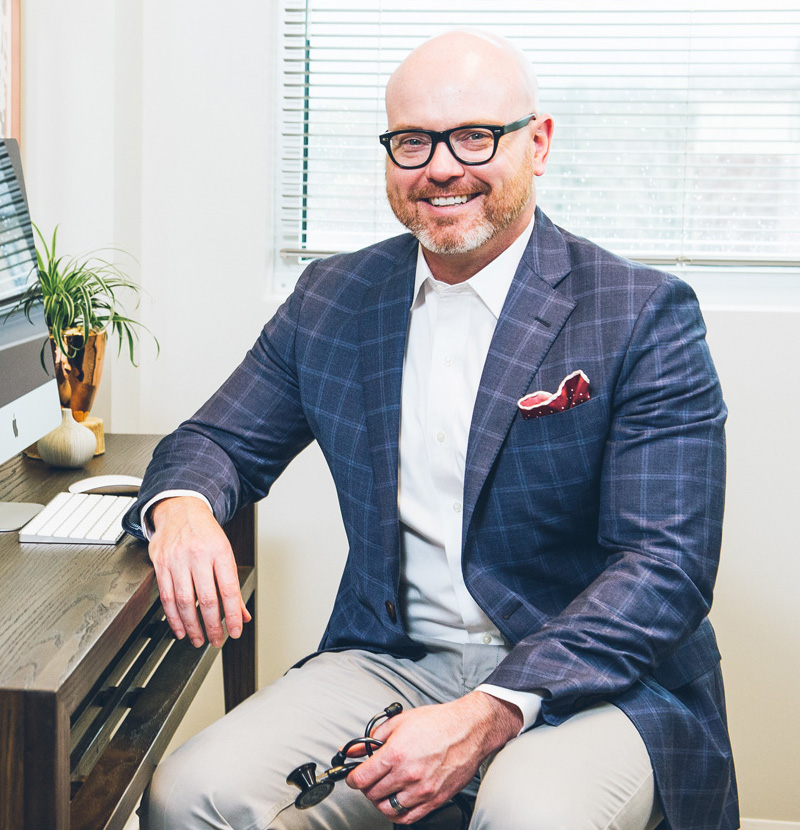
Dr. Aaron Wenzel is a concierge physician specializing in the care of fast-moving entrepreneurs, executives, and public figures in the Nashville, TN area. Dr. Wenzel’s diverse life experience and extensive training in family medicine, emergency care, nutrition, and hormone replacement therapies give him the unique platform to provide unmatched care for his patients.




